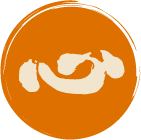Neck Pain & Chinese Medicine
I have prepared a special herbal formulation for neck stiffness and pain based on the teachings of the legendary doctor Master Tung. This formula is distinguished by its meridian energetics approach in the use of herbs. Used in conjunction with acupuncture, it brings quick relief to both chronic and acute neck stiffness and pain.
The so-called Traditional Chinese Medicine (TCM) is a misnomer. Instead of embodying the more than 3,000 years tradition of Chinese medicine, it is a creation of the communist regime in the 1950’s after it took over mainland China. It is a purged version of Chinese medicine that attempts to make it more materialistic and scientific, in other words, more like conventional western medicine. It is this version of Chinese medicine, in translation, that has been imported into the US and widely taught and practiced today.
While this abridged version of Chinese medicine is easier to teach in a college program and more acceptable by western culture much of its spiritual and energetic elements are lost. It is ironic that Chinese medicine, whose chief asset is that it is different from western medicine, now tries to become more like western medicine. Likewise, TCM takes a so-called ‘herbal approach’ in acupuncture. That means acupuncture points are categorized with actions and indications resulting in point recipes for different disease patterns. Theoretically anybody can stick needles into points A, B, C, D & E to obtain the same results, much like taking an aspirin to kill pain: it matters not whether the doctor handed the pill to you or you picked it off a shelf in a drug store. This is in contradistinction to the ‘meridian approach’ which emphasizes the subtle energetics of the whole process. In this case an acupuncturist has to cultivate the use of each point and a point combination that works for one acupuncturist may not work for another.
However, even the conventional understanding of the dichotomy of ‘herbal’ versus ‘meridian’ approaches is inaccurate. Although the use of herbs, substances, seem more materially based than the stimulation of acupoints the development of the Chinese materia medica relied on the shape and form, color, smell, taste, weight and habitat of each herb in arriving at its functions and indications which are then confirmed by its empirical use. It is an energetic and intuitive rather than a scientific process. So it’s less a distinction between an ‘herbal’ versus ‘meridian’ approach than a difference between an ‘energetics’ versus ‘scientific’ approach: the choice between practicing Chinese as an art or as a science.
When patients tell me they’ve tried acupuncture before and it didn’t work, I have to explain to them acupuncture is not one thing, indeed it is different in the hands of different acupuncturists. Fortunately I am able to help them experience how acupuncture does work for them. Master Tung was the most renowned acupuncturist of the modern age. He had a profound understanding of the energetics of acupuncture and the body. He took the same ‘energetics’ approach in the use of herbs. Performed in this way, Chinese medicine is simple, economical, and miraculous.

